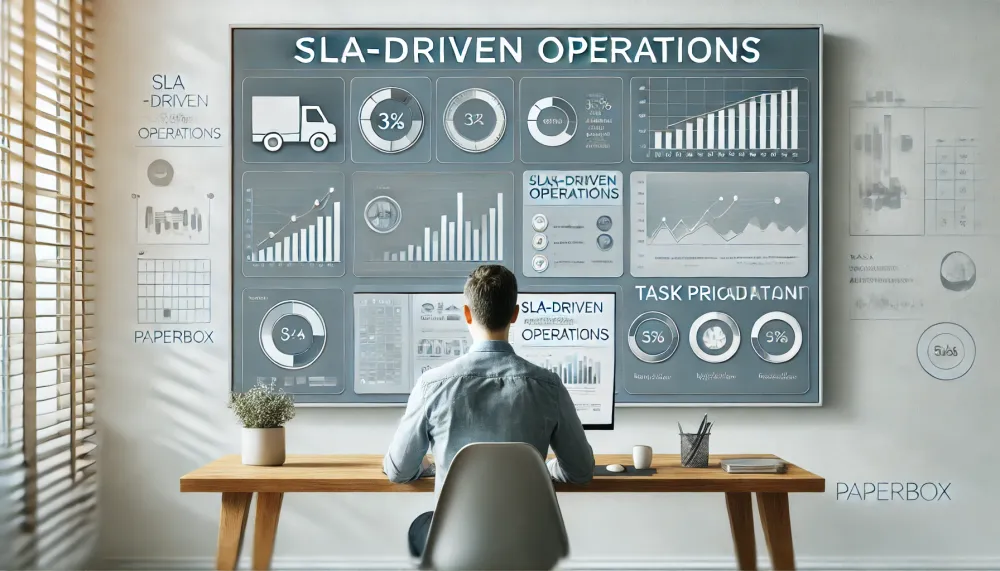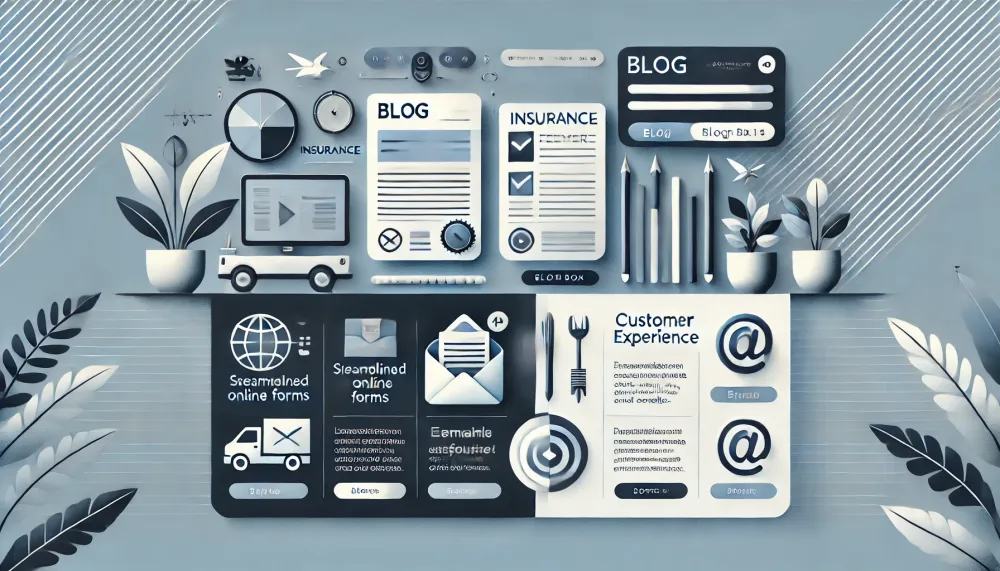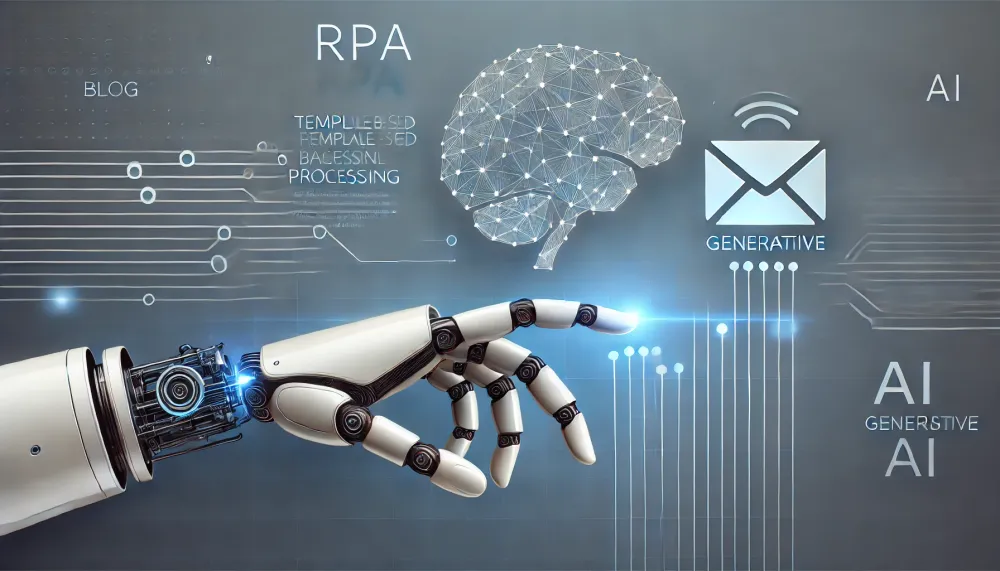In the bustling world of insurance, handling vast amounts of email efficiently is paramount for maintaining streamlined operations and delivering high-quality service. Traditionally, insurers have relied on template-based processing, often implemented through Robotic Process Automation (RPA). While RPA has its merits, it struggles with the complex, unstructured data typical of insurance communications. This is where Generative AI (GenAI) steps in, offering transformative advantages that go beyond the capabilities of traditional methods.
The Limitations of Traditional RPA
Template-Based Recognition
RPA focuses on template recognition rather than effectively handling email traffic. These systems assume effective linking but frequently misclassify emails into broad categories such as "Free Letter/Communication" or “others” resulting in inefficiencies and errors.
Focus on All Tasks
RPA focuses on automating and executing all tasks within its scope according to predefined rules and workflows. It doesn't inherently prioritize tasks but processes them based on availability and the sequence defined in the workflow design. Prioritization, if needed, must be explicitly programmed into the automation logic by the developers or process designers.
Costly and Inflexible Solutions
Solutions relying on Robotic Process Automation (RPA) are often costly and inflexible due to the extensive (custom) configuration required, resulting in high startup costs. Implementing RPA systems necessitates thorough analysis and customization of business processes to ensure bots operate efficiently and accurately. Additionally, any changes in business processes or systems can lead to expensive and time-consuming reconfigurations, limiting the flexibility of RPA solutions.
5 Reasons to Consider GenAI
Advanced Natural Language Understanding
Imagine receiving an email filled with industry jargon, complex requests, and nuanced details. RPA, with its reliance on predefined rules and templates, often falters in such scenarios. GenAI, however, is designed to understand and generate human-like text through sophisticated language models. This enables GenAI to process emails with remarkable precision and context-awareness, ensuring that critical information is accurately classified and acted upon. By integrating GenAI, insurers can significantly reduce the risk of misclassification and ensure that important emails are promptly prioritized and addressed.
Adaptability and Reduced Maintenance Costs
In the fast-paced insurance sector, email formats and business rules constantly evolve. RPA systems require frequent manual updates to cope with these changes, leading to increased operational costs. GenAI, on the other hand, can quickly adapt to large datasets, new email formats, and evolving terminologies without extensive reprogramming. This adaptability translates to lower maintenance costs and allows IT teams to focus on more strategic tasks. With GenAI, insurers can achieve greater operational efficiency and flexibility.
Contextual Analysis for Better Decision-Making
Emails in the insurance industry often contain unstructured data that RPA systems struggle to handle. GenAI excels in performing contextual analysis to understand the intent behind emails and extract relevant information. This capability leads to improved decision-making and more efficient operations. By leveraging GenAI, insurers can enhance the quality of information extracted from emails, ensuring that every piece of communication is accurately interpreted and appropriately actioned.
Scalability to Meet Growing Demands
As insurance companies grow, so does the volume of emails they receive. While RPA can be scaled, it often requires significant resources and time to handle tasks involving complex decision-making or frequent updates to business logic. GenAI is built to handle large volumes of data and complex tasks efficiently, leveraging cloud computing resources for seamless scalability. This ensures that email processing capabilities can expand with the company’s needs without compromising performance. Adopting GenAI allows insurers to effortlessly scale their operations to handle increasing volumes of communication.
Flexibility for Diverse Use Cases
RPA is primarily designed for repetitive, rule-based tasks, making it less versatile for tasks that require deep language comprehension or advanced analytics. GenAI, however, goes beyond simple automation. It can be applied to a variety of tasks such as summarization, translation, sentiment analysis, predictive analytics, and conversational interfaces like chatbots. This flexibility enables insurers to expand their use of AI, driving greater value from their AI investments and enhancing customer interaction.
GenAI in Action
Email Processing on Steroids
One of the standout applications of GenAI is in email processing. GenAI can automatically categorize emails, summarize content, detect sentiment, and respond to inquiries, significantly improving efficiency and customer satisfaction. Unlike RPA, which relies on predefined rules and additional scripting for complex tasks, GenAI provides a more streamlined and effective email processing system.
Data Classification and Archiving
In terms of data classification and archiving, GenAI ensures high-quality categorization based on contextual understanding, minimizing the need for manual intervention. RPA struggles with data variations and requires frequent updates to maintain accuracy. By utilizing GenAI for these tasks, insurers can achieve a more reliable and efficient system, reducing the operational load and enhancing overall data management.
Task Management for Administrators
While RPA is limited to linking emails, Gen AI goes a step further. Solutions driven by Gen AI are able to make task management easier for administrators and administrative assistants by prioritising tasks based on the type of request they receive. Here, Gen AI implements your company's SLA-procedures.
Together with a summary module, which easily summarises emails into manageable task descriptions, this provides a clear list of next steps for your employees, without human intervention.
Taking Action: Transform Your Email Processing Today
Ready to make the switch from template-based processing to Generative AI? Here’s how to start:
- Evaluate Your Current System:, Identify the limitations and pain points of your current RPA-based solution.
- Explore GenAI Solutions:, Investigate how GenAI can address these challenges and meet your specific needs.
- Pilot a GenAI Implementation:, Start with a pilot project to see the benefits in a controlled environment.
- Scale and Integrate:, Once proven, scale the GenAI solution across your operations and integrate it with existing systems.
- Monitor and Optimize:, Continuously monitor and adjust the GenAI system to optimize efficiency and accuracy.
In conclusion, switching to GenAI offers a more accurate, cost-effective, and adaptable solution, reducing financial and operational burdens. Transform your email processing today!




